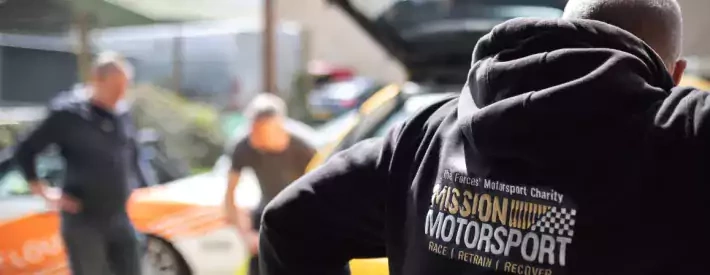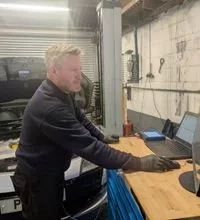Inside a centre: Forging a new path

Changing careers can be a daunting prospect for anyone at any age. But when you consider people who make the switch from the Armed Forces, people who may have been physically or mentally affected by conflict or military operations, it’s a completely different ball game.
Thankfully, help has been at hand since 2012 for these service leavers in the form of Mission Motorsport, the Forces’ motorsport charity. Designed to give people a fresh start in civilian life and work, the charity has grown over the years and now offers a series of qualifications and opportunities in the motor trade. With its ‘Race, Retrain, Recover’ mantra, the IMI training provider has given a fresh outlook and purpose to countless individuals who are gaining qualifications and becoming fully immersed in the automotive sector.
Over the past six years, former technical training manager David Guilfoyle has seen Mission Motorsport increase the number – and range – of courses offered, as well as forging stronger relationships with vehicle manufacturers and motor industry heavyweights to further help ex-military folk adjust to life after service.
How would you describe the Mission Motorsport organisation?
A big part of what we do is training, which helps a lot of military service leavers gain the qualifications they need to start a new career. It also helps service leavers in other ways, including confidence-building and the capability to do their hobby safely and correctly. Outside of training, the charity does an awful lot, including sporting output such as go-karting and track days, which helps them meet other service leavers, veterans, and military communities, depending on the event.
How does Mission Motorsport help service leavers get a job in the automotive industry?
The charity does a lot of vocational work with its Mission Automotive and Mission Renewable initiatives. Mission Automotive has been put into the likes of Stellantis and Jaguar Land Rover, who use us to develop their Armed Forces recruitment programmes. We’ve worked with a lot of car manufacturers and other companies using these initiatives with a lot of success. Mission Renewable is the same format, but for the renewable sector rather than automotive.
How is Mission Motorsport set up to retrain service leavers and what courses do you offer them?
Our short courses, such as electric vehicle or air conditioning and refrigerant handling, are primarily the same qualification that you would get in a normal training centre. The only difference is that we target our beneficiary audience – the military community– and we are set up to help them. That includes the funding that’s available from the military and direct links with other gift-giving Armed Forces charities that are able to help fund and pay for courses.
Other training centres don’t have links with other automotive businesses, which means that off the back of our full-time Level 3 Light Vehicle course, Stellantis offers a guaranteed interview. So candidates will do our course and a little bit of eLearning, then have the opportunity to become a technician in a dealership.
These companies really try to build relationships with the learners and offer open days that cover items such as CV and job interview workshops. This is really useful because people leaving the services have often never done anything like that.
How does your approach to learning differ from other centres?
We add value across all of our courses in the sense that the timetable is more suited to an adult than a teenager. So instead of training over two years, our courses run between nine to 12 months. We also do blocks that start at 10am every day, so learners can do things like take their children to school.
A lot of our trainers are also ex-military, so there’s a common ground and we can really help with learners that are struggling with mental health issues. These are things that a standard training centre isn’t set up to provide because the clients don’t require it.
What are Mission Motorsport’s plans for the future?
Increasing learner numbers, especially on full-time courses, and adding to the number of courses. There’s been talk of a Level 1 Hydrogen qualification.
The main thing we’ve been trying to do since we’ve become an IMI Centre is to make training financially self-sufficient, so it doesn’t require funding from the charity to pay wages and rent. We’re almost there, but it depends on learner numbers, which is why it’s such a priority.
You’re leaving Mission Motorsport. What do you hope you’ll be remembered for?
My legacy has been on my mind over the past few weeks, but I’m not sure you can sway legacy too much in the last few months of a job! When you have been somewhere for six years, your legacy is normally decided. Having said that, when I started in 2017, we had one City & Guilds training course and didn’t have our own centre – we were a satellite centre of Tedworth House, which is a recovery centre for Help for Heroes.
Over time, we took the training elements into our own hands, refurbished what we had, put in new ramps and expanded what we offered. By 2020, we had joined up with the IMI so that we could be an optimised training centre and launch more courses.
So I’d say my legacy is getting the centre to the position it’s in now, where it offers lots of opportunities, a total of seven courses, and is less of a financial burden on the rest of the charity.
Find out how IMI approved centres play a vital role in helping to maintain and improve the skills, knowledge and competence of the automotive industry.




